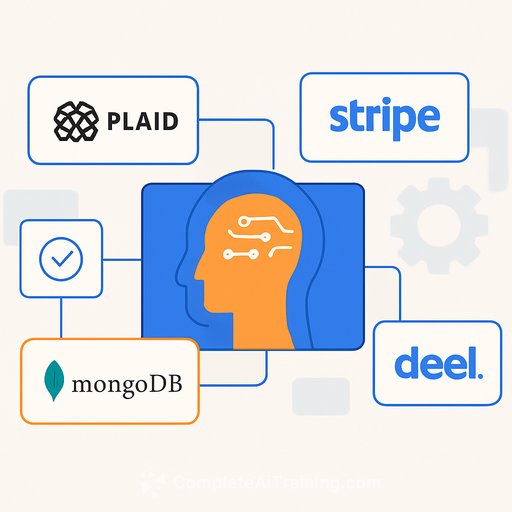How to Future-Proof Your Email Marketing with BIMI, AMP, and AI
Email marketing remains one of the most effective channels, but inboxes are crowded. With over 340 billion emails sent daily, standing out is tougher than ever. To boost deliverability, engagement, and personalization, you need to modernize your approach using BIMI, AMP for Email, and AI-driven personalization.
This guide breaks down these tools and explains how to use them to keep your email strategy competitive now and in the future.
Why Future-Proofing Matters in Email Marketing
Email marketing is changing. Privacy rules are stricter, security demands are higher, and technology is shifting how brands connect with customers. Despite this, email engagement is growing — open rates rose 6%, and click-to-conversion rates jumped 27.6% in 2024, according to Omnisend’s 2025 Marketing Report.
Marketers face three major challenges:
- Less access to third-party data due to privacy regulations and browser changes.
- Harder deliverability as inbox providers block unauthenticated senders.
- Growing customer expectations for personalized, timely, and relevant emails.
Planning ahead for these shifts ensures your email campaigns stay effective as the environment evolves.
Why Third-Party Data Is Declining and How Email Fills the Gap
With GDPR, CCPA, and browser changes limiting third-party cookie tracking, marketers find it harder to target and build customer profiles. For example, after Apple’s iOS 14.5 update, 96% of users opted out of third-party tracking. Browsers like Safari and Firefox block third-party cookies by default, and Chrome will follow.
Email marketing relies on first-party data — information your subscribers willingly share. This data is permission-based, measurable, and built on trust.
Rising Security Concerns Demand Authentication
Email is a common target for phishing and spoofing attacks. Inbox providers respond by tightening filters and requiring stronger sender authentication. Emails failing authentication risk being flagged as spam or rejected.
Brands should implement:
- SPF (Sender Policy Framework) to verify authorized sending servers.
- DKIM (DomainKeys Identified Mail) to add a digital signature verifying sender identity.
- DMARC (Domain-based Message Authentication, Reporting, and Conformance) to align SPF and DKIM and instruct inboxes on how to handle failures.
Adding BIMI (Brand Indicators for Message Identification) displays your verified logo in supported inboxes, boosting trust and brand recognition at a glance. Together, these protocols improve deliverability, protect your brand, and build subscriber confidence.
Customers Are Cautious, But Trust Can Be Earned
Privacy and security are top concerns for consumers. Studies show:
- 80% mark emails as spam if they look suspicious.
- 55% report emails as spam if they didn’t opt in.
- 47% complain if there’s no easy unsubscribe option.
Phishing attacks are on the rise, so users are cautious about unknown or intrusive emails. Authentication and transparency are essential to stand out, build trust, and improve inbox placement.
Future-Proofing Starts with Trust, Relevance, and Scale
Successful email strategies combine authentication, personalization, and engagement — all built on first-party data that fosters strong subscriber relationships. Focus on these three tactics:
- Use BIMI to establish visual trust with recipients.
- Add AMP components to make emails interactive and user-friendly.
- Leverage AI to personalize content, timing, and offers at scale.
These approaches don’t rely on invasive tracking but on data your audience chooses to share.
Implementing BIMI for Brand Trust and Deliverability
BIMI is an email authentication standard that displays your verified logo alongside emails in supported inboxes like Gmail and Yahoo. With SPF, DKIM, and DMARC properly set up, BIMI enhances brand visibility, increases engagement, and builds trust.
How BIMI Can Improve Email Marketing Performance
Research shows BIMI can:
- Increase consumer confidence in email legitimacy by 90%
- Boost open rates by 21%
- Improve brand recall by 18% after just five seconds
While BIMI doesn’t directly impact inbox placement, better engagement and fewer spam complaints help your sender reputation over time.
How to Set Up BIMI
- Confirm DMARC enforcement: Ensure at least 30 days of DMARC set to quarantine or reject.
- Prepare your logo: Create an SVG Tiny Portable/Secure (SVG P/S) format logo file.
- Add BIMI DNS record: Publish a BIMI TXT record in your DNS settings.
- Test and monitor: Use tools like Valimail or Mailkit to verify logo display in supported inboxes.
Using AMP for Interactive, High-Engagement Emails
AMP for Email turns static messages into interactive experiences. Customers can scroll through carousels, submit reviews, or browse products with live pricing — all inside their inbox.
How AMP Can Improve User Experience
AMP removes friction by letting users act directly in the email instead of visiting external sites. This can increase engagement and create a dynamic, seamless customer experience.
How to Add AMP to Your Campaigns
You can add AMP via custom code or use platforms with built-in AMP support. If developer resources are limited, tools like Stripo.email, Mailmodo, and Mailercloud offer AMP-ready templates.
AMP Limitations and Fallbacks
AMP is supported by Gmail, Yahoo Mail, Mail.ru, and a few others. Always include traditional HTML and plain-text versions to ensure your email displays correctly everywhere.
Using AI Tools to Personalize Emails at Scale
AI-powered tools help marketers create targeted campaigns that improve engagement, retention, and conversions. Customers expect personalized experiences, and AI makes this achievable with real-time data.
AI Capabilities to Look For
- Personalized subject lines and dynamic content
- AI-generated product recommendations
- Smart send-time optimization based on user behavior
- Automated A/B testing for ongoing improvement
Integrating These Tactics into Your Email Ecosystem
Adding BIMI, AMP, and AI may require new tools or updates to your tech stack. Choose Email Service Providers (ESPs) that support these features natively. Make sure your Customer Data Platform (CDP) feeds real-time data for AI-driven personalization and segmentation.
Email Service Provider (ESP) Requirements
Select platforms that handle BIMI verification, AMP email creation, and AI personalization smoothly. Integration and data flow between your ESP and CDP is key for seamless execution.
How to Test and Optimize Your Email Marketing Changes
Running A/B tests aligned with your business goals helps measure what works. Focus on KPIs like open rates, click-throughs, conversions, and spam complaint rates to evaluate impact.
Track KPIs That Align with Business Goals
Testing different features and monitoring overall campaign results identify which tactics deliver the best ROI and engagement.
Bring It All Together: Strategy + Tech = Long-Term Wins
Combining these tools and strategies with ongoing testing and list hygiene will keep your email marketing productive. Prioritize relevance, trust, and engagement to maintain strong subscriber relationships.
Email marketing is changing, but with the right approach, you can stay ahead and continue driving results.
Your membership also unlocks:






